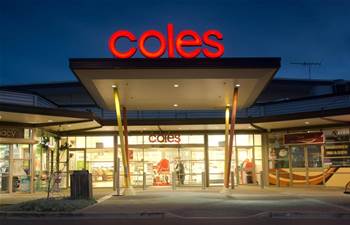Coles will turn its attention to innovation as its smarter selling transformation program completes its third year.
The smarter selling transformation strategy was launched in 2019 to cut $1 billion in costs from the retailer’s business spending.
The supermarket giant reported its smarter selling strategy delivered around $230 million in benefits across FY22 and is on course to realise its four-year billion-dollar savings by the end of FY23.
In its 2022 full-year results, Coles CEO Steven Cain said the strategy's main pillars have “been refreshed” to expand its services “to meet the needs of omnichannel customers.”
“We're shifting the focus of smarter selling to innovation,” said Cain.
“We've also updated our strategic differentiators to reflect the progress we've already made and to encompass our wider ambitions in areas such as ecommerce, sustainability, team engagement and community partnerships.”
Cain said the “priority” is now to “deliver a unified customer experience through enhancements to our app and website” alongside further investment in its Sydney-based Ocado online customer fulfilment centres and Witron distribution centres (DCs).
Coles has “streamlined distribution centre operations" via "automatic truck entry and exit for the main supply of vehicles passing through" its centres.
Meanwhole, in ecommerce the company pursued optimisation "through adjusting store catchments, optimising routes, shift times and customer offerings”.
Coles reported the smarter selling program will allow the business to partially mitigate some of the underlying cost pressures on doing business and enable it to make further strategic investments in ecommerce, digital and technology.
Ocado and Witron update
Cain said its Witron-powered automated distribution centres had progressed with internal fitout “of automation equipment and racking” at the Queensland automated distribution centre, while “fitout of automation commenced at the [Witron] NSW site.”
He added construction and installation of Witron “is progressing well” despite pandemic challenges.
However, “elevated commodity prices and higher labour costs have increased the estimated capital investment over the four-and-a-half-year period inclusive of contingency to approximately $1.04 billion, compared to the previously advised $950 million," he said.
“The [Witron] facilities are due to be commissioned within the previously communicated frames, the Queensland facility in the third quarter of FY23 and the NSW facility in the third quarter of FY24.”
Cain said its Sydney and Melbourne Ocado customer fulfilment centres (CFC) have been “handed over for robotic fitout during the year”.
Its Ocado program was “delivered on time” and is expected to “approximately double existing home delivery store range” and create "increased network capacity”.
“Our strategic plans have adapted to meet the significantly higher ecommerce sales that we have now than when we look back in 2019," Cain said.
“We've significantly invested in the customer experience and capacity since the onset of Covid-19.
“We've updated our arrangements with Ocado. They will manage the online store and web presence for the intake of orders, and Ocado will provide OSP [Ocado smart platform) facility and fulfillment functionality through the CFC.
“In FY23, we expect to spend approximately $310 million in capital expenditure in relation to both Witron and Ocado and this has included within the group capital expenditure guidance," Cain said.
“The cumulative spend for both projects to the end of FY23 is estimated to account for approximately 75 percent of the total project capital expenditure.”
Capex
Over the year, invested capital expenditure reached $1.2 billion “focused on growth and efficiency initiatives”.
Coles’ capital expenditure was driven by the Witron and Ocado transformation projects, new store openings renewals, accelerated ecommerce growth and in-store service transformation.
The outlook for the coming year will see Coles’ capital expenditure come in at around $1.2 billion and $1.4 billion inclusive of the Witron and Ocado projects.
Further highlights outlook
Cain said that over the past financial year, Coles refreshed its career website and recruitment processes “using technology to deliver a more streamlined and efficient process”.
Coles also plans to open “approximately 20 new stores, close nine stores and renew approximately 40 stores in supermarkets, and in liquor, accelerate new space and renew stores at a similar level to FY22.”
“In ecommerce we delivered very strong growth with supermarket ecommerce sales at 41 percent and liquor ecommerce sales at 49 percent,” said Cain.
“Significant investments were made during the year in customer experience capacity and a unified app. We have also recently launched our unified website."
Cain said the business will “achieve long-term structural cost advantages through smarter selling programs including data automation and technology partnerships.
“This will be delivered through an enhanced supply chain and operations through our transformation projects with Witron and Ocado.
“We will also accelerate self-service transformation store and focus on smarter selling 2.0. This will include further initiatives around technology, AI and data”.
Over the year Coles stated it improved processes and built efficiency through data-driven insights including streamlining distribution centre operations through automated (paperless) truck entry/exit for 45,000 supplier vehicles.
Across the year Coles renewed and optimised 50 supermarkets, six Coles Local stores and 208 liquor stores including 191 Black & White Liquorland, eight First Choice Liquor Market and nine Vintage Cellar Evolution stores.



.png&h=140&w=231&c=1&s=0)






















